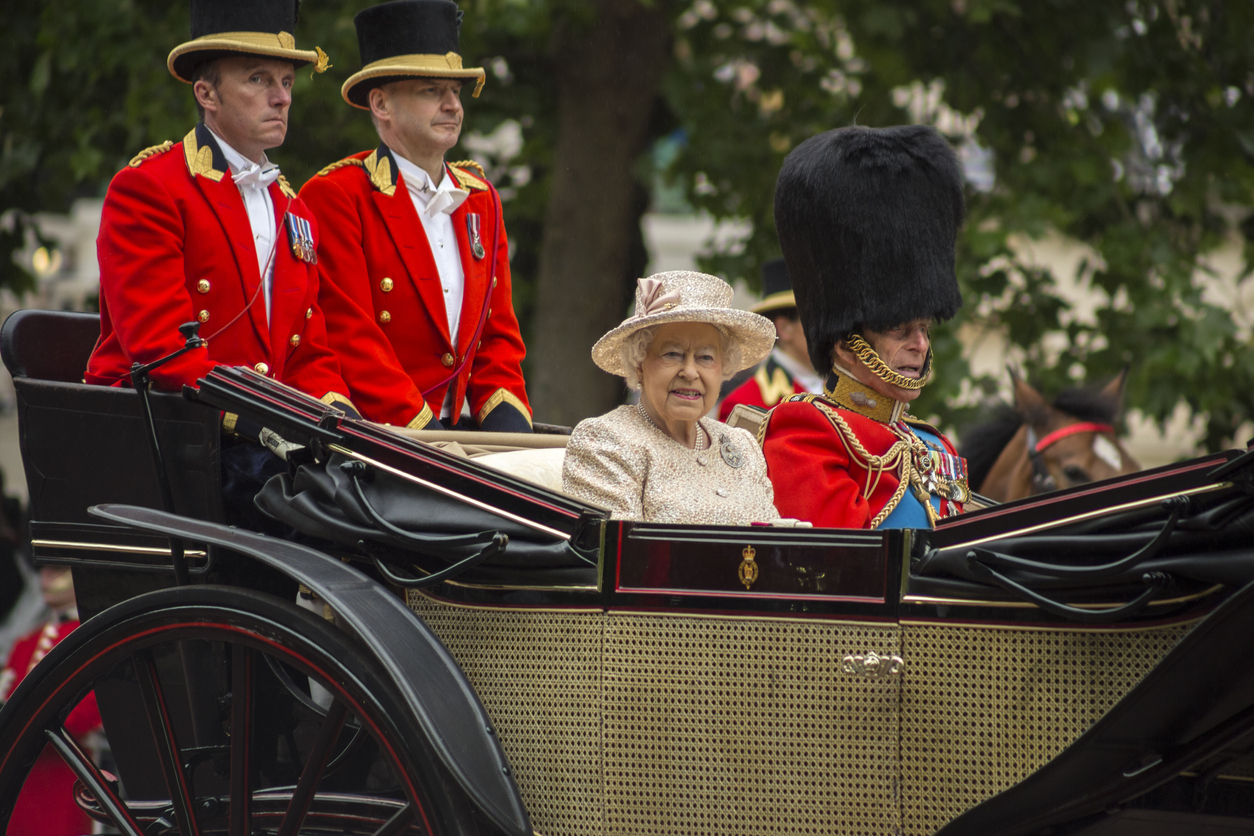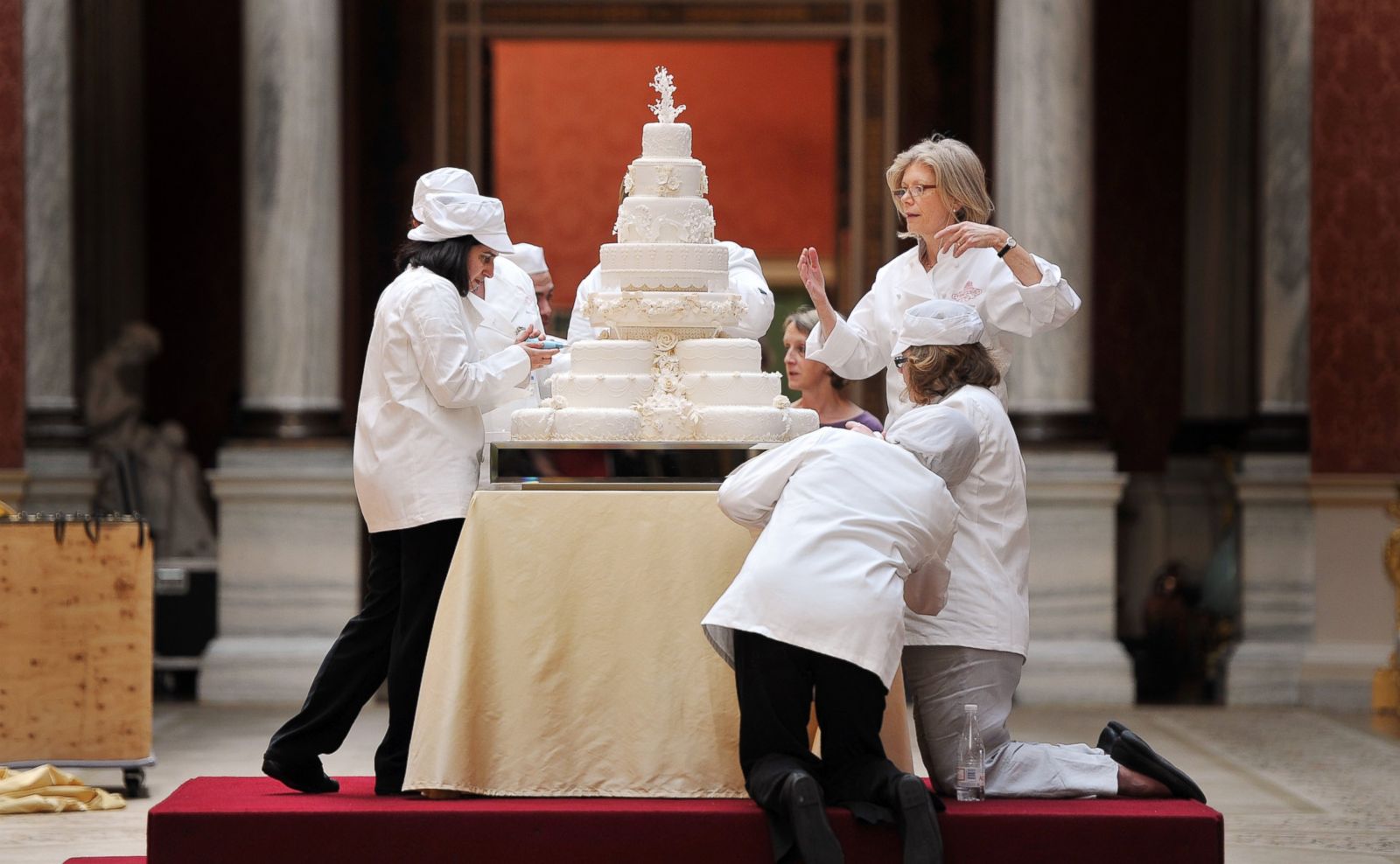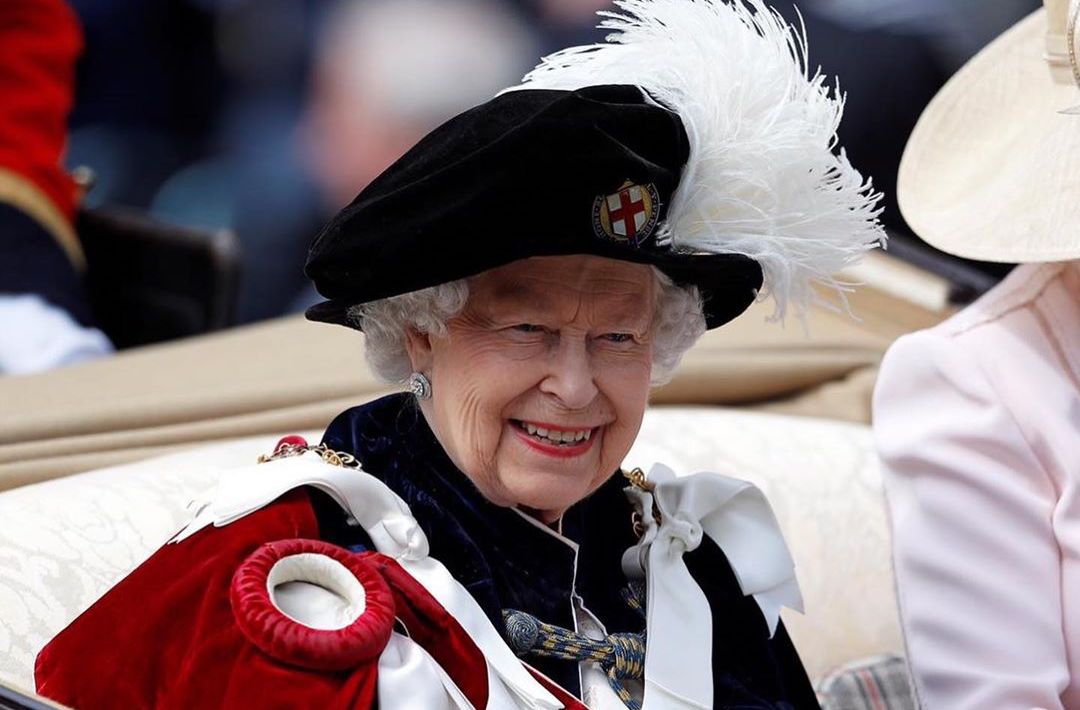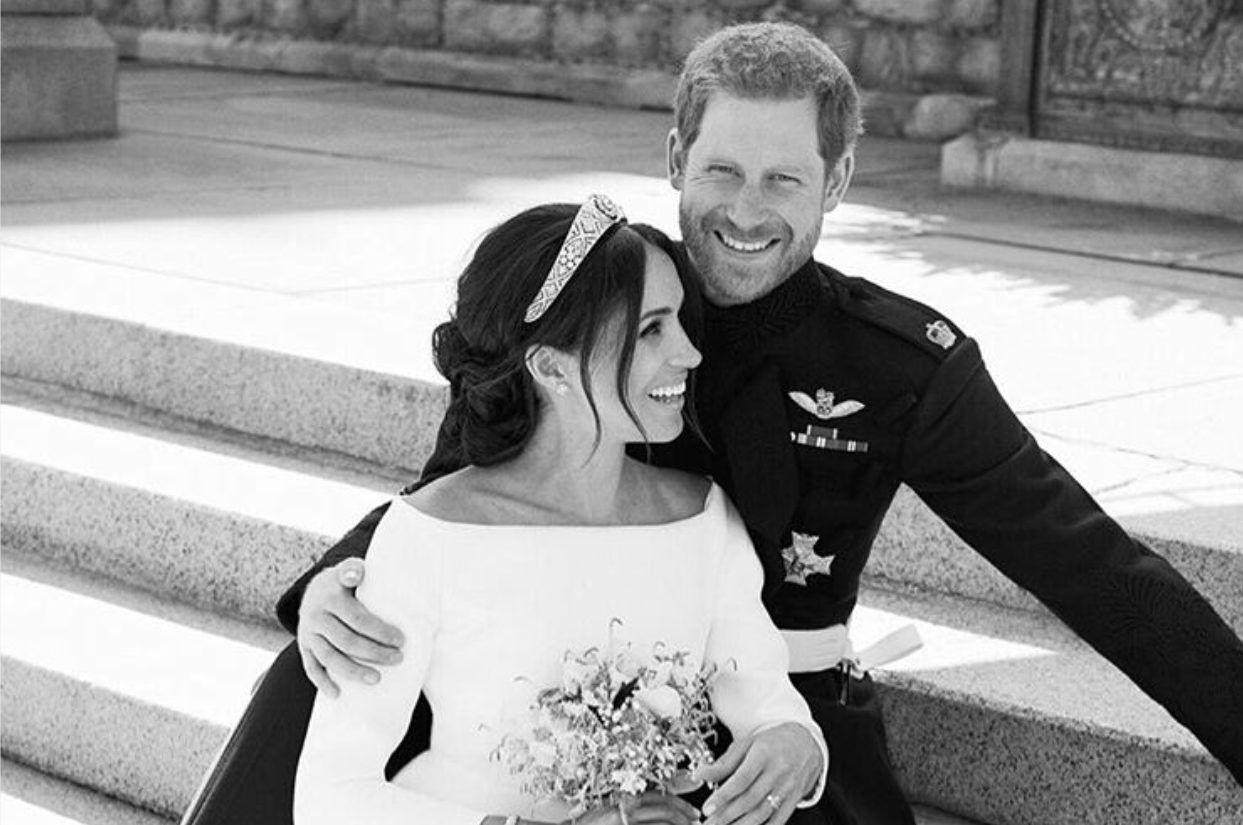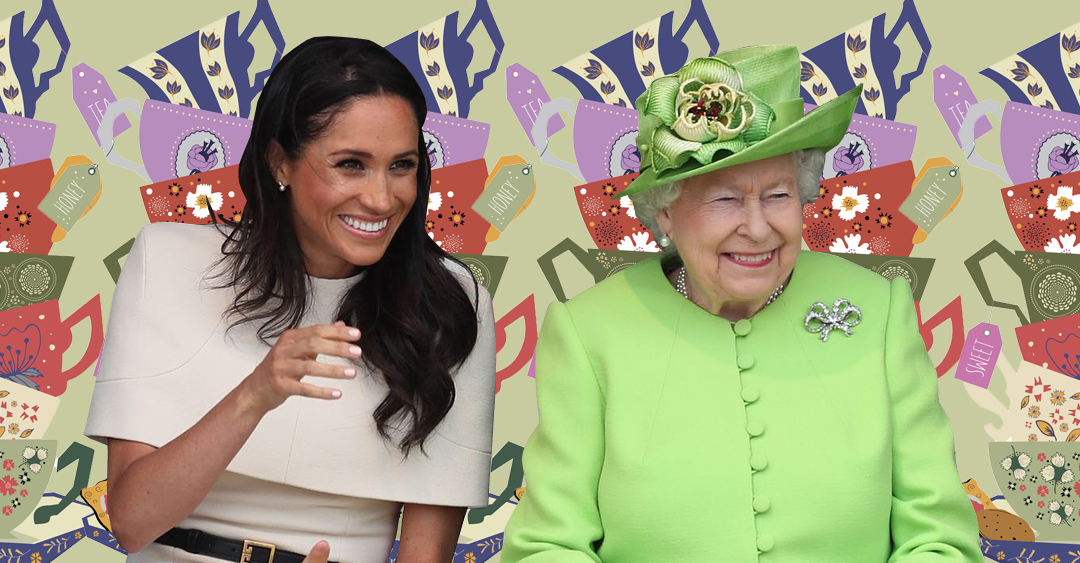If you binge-watched The Crown, know all the royal baby names (and the order of succession), and got up super early to witness Prince Harry marry the Duchess of Sussex (better known as Meghan Markle), you already know that the British Royal family is fascinating. Plus, the family members were born into positions of privilege few of us can even imagine. For example, not only does the Queen have to give Royal Assent for a bill to become law, but she also has more crowns and tiaras than anyone could ever need. Plus, she owns most of the swans and dolphins in Britain and manages six homes. That’s two palaces, three castles, and an estate that’s basically a huge mansion in the middle of a massive stretch of land.
But wherever Her Majesty and the rest of the royal family are, there’s one thing they have to do just like the rest of us. They gotta eat. And just like the rest of us, some of them had, and have, some pretty specific food habits. Plus royals, they can demand whatever they want.
So put on your finest jewels, take your elbows off the table, and please rise to attention as we introduce you to the weirdest royal food habits of British monarchs past, present, and future.
1. William The Conqueror
Food to curry favor
The first Norman king of England was also known as William I or William the Bastard, because he was actually the son of an unmarried French woman and the Duke of Normandy. After some Game of Thrones-style squabbling occurred, William I seized control of the English throne in 1066 and started the Norman line of kings.
And he made sure to show off his hard-won kingly status. He had a top table, where only very important guests ate roasted meat instead of the boiled meat served to junior members of the court. All of William’s food cooked separately from everyone else’s. But he often gave food from his plate to other people as a great honor. Meanwhile, those lower-level folks typically ate from trenchers – bowls of hollowed-out stale bread. When they finished, the soggy bread bowl would be donated to the poor. Er, thanks?
2. King John
Death by peaches (or poison…)
If you watched the Disney cartoon, Robin Hood, you already know King John. He’s the evil lion prince who schemed to take over England while his brother, Richard the Lionheart, caused mayhem during the Crusades. The IRL King John was the kind of terrible you won’t see in a Disney movie. In fact, he practiced cruelty with his enemies and his own countrymen. The nobles got so fed up that they started a civil war to overthrow him and drew up the Magna Carta in 1215. It basically stood as the first list of rules for governing England.
However, it wasn’t battle that finished off John. His poor food decisions caused his demise. In 1216, while traveling between battlefields, John contracted dysentery, either from eating unripe peaches or from drinking too much sweet ale. He may also have been poisoned, though. Over 500 years later, in 1797, a thief opened the former king’s tomb and stole two of his teeth. They later ended up in Worcester City Museum. X-rays showed that John actually ground his teeth. This explained why he seemingly preferred soft foods, especially meat and eggs. In 1206, the menu for the king’s Christmas feast included 1,500 chickens, 20 oxen, 100 pigs, 100 sheep, and 5,000 eggs.
3. Richard III
World’s worst uncle?
Richard III brings to mind another villainous Disney lion. Like Scar from The Lion King, he was highly displeased when his brother, Edward IV, left the throne to his oldest son, Edward V. The new heir was only about 13 years old at the time. Consequently, Richard imprisoned Edward V and his other nephew, 10-year-old Richard Duke of York, in the Tower of London. Supposedly, he even ordered the boys’ murder.
The new king met his own nasty end just two years later in 1845, becoming the last English king to perish in battle. In August 2012, his remains and those of the church he’d been buried at were unearthed. Scientists studied Richard III’s bones and determined what the king consumed before and after his ascension to the throne. According to their findings, he ate better than most other high-status people of his time. He preferred freshwater fish, as well as birds like egrets, peacocks, and swans. The king also liked his wine imported, rather than local, which would have been expensive. He apparently drank about one bottle a day in his last years.
4. Henry VIII
He actually had good table manners.
Henry VII’s forces defeated Richard III at the Battle of Bosworth and united the warring houses of Lancaster and York. But it’s his son, Henry VIII, who might be the most famous or infamous English monarch of all time. You may have seen a young, dashing Henry portrayed by Jonathan Rhys Meyers in The Tudors, or you might know him for his multitude of wives. But Henry VIII also had an enormous appetite.
However, while Henry enjoyed his food, he actually insisted on good manners. The court had gold and silver plates and crystal glasses. But people ate with their fingers and knives. The king insisted, however, on strict rules about what foods his subjects could even touch with their hands.
He also had a lot of meat-heavy meals. His royal menus included the expected, like sheep, deer, wild boar, heron, venison and swan, and the not-so-expected. For example, he ate peacock, porpoise, and seagull whenever he could. But Henry VIII wasn’t all meat all the time. He also enjoyed fruit like damsons, plums, and strawberries. He even introduced apricots to Britain.
5. Elizabeth I
Even queens need dentists.
Henry’s second-eldest daughter Elizabeth had to wait for three more monarchs to rule before she got her chance at the throne. One of those men only lasted nine days, though. She had an eventful reign, fighting off Spanish would-be invaders and overseeing the colonization of America. And it was the connection to America that introduced her to a new ingredient for the first time: sugar.
Until that point, everyone used honey to sweeten foods. But Elizabeth I loved sugar in all of its forms. Chefs used it in desserts like gingerbread and marchpane, which is somewhat similar to modern marzipan. Other sugar treats included leach, or leech, a mix of sugar, rosewater, and milk. People also added sugar to gelatin.
Unfortunately, all of the sugar infamously rotted the queen’s teeth. People claimed they looked black. In fact, sugar was also used as an early and highly ineffective form of toothpaste!
6. Charles I
A diet unfit for anyone
The Virgin Queen Elizabeth I named a distant cousin, King James VI of Scotland, her heir. This made him James I, the first monarch to rule over England, Wales (which Henry VIII made into one country), Ireland, and Scotland. So technically, he’s the first British monarch, and his son, Charles I, was the second. But things weren’t supposed to happen that way. Charles’s older brother, Henry, died in 1612, and Charles was crowned in 1625. Historians suspected that Charles grew up with a modest diet, though. Apparently, his childhood diet of cereal and few fruits and vegetables left him with a vitamin D deficiency that stunted his growth and caused him to develop rickets.
Like Richard III, Charles’s diet improved when he was king. His French wife, Henrietta Maria, helped introduce foods from mainland Europe to the English court, including fancy sauces and vegetables. Less appetizing were pies that contained live frogs or live birds. His chefs even turned pastries and colorful almond paste into incredible sculptures, like ships with working cannons and dead stags with red wine for blood.
7. Charles II
Eat, drink, and be the Merry Monarch.
Charles I’s reign came to an unhappy end in 1649. He was executed by Parliamentarians who tired of his tyrannical and incompetent rule. Britain managed as a republic for 11 years, governed by Lord Protector Oliver Cromwell and his son, another Richard. The Cromwells turned into mini dictators, and eventually, the Army and Parliament rebelled. Consequently, Charles’s son, Charles II, got the throne back in 1660.
Known as the Merry Monarch, Charles II loved to party and throw lavish feasts. At least once a week, he hosted a huge dinner with his court. The king sat at a table that was raised higher than everyone else in the hall to indicate his importance. Only his own family or people from other royal lines could join him at the special table. Starting in the mid-afternoon, these meals included 26 dishes. Charles II had three personal members of staff to help him eat: a carver, a server, and a cupbearer. They offered the food and drink while on bent knees. Additionally, one person dabbed food from the king’s mouth.
The popularity of French cuisine continued in Charles II’s reign. He also liked to try out exotic new dishes. He was one of the first people in Britain to eat pineapple and was the first British monarch to serve ice cream at a royal banquet!
8. George II
Birds beware.
Five monarchs later, in 1727, Charles II’s distant-ish cousin, George II, took the throne. And like many of his predecessors, George II seemed to have a particular fondness for eating songbirds.
In January 2014, a collection of menus from Kensington Palace between 1736 and 1737 went up for auction. They gave historians insight into the foods enjoyed by George II and Queen Caroline. The royals ate pineapple, frogs, puffins, and songbirds. They especially enjoyed baby animals because the meat was extra tender.
Even tragedy didn’t stop the royal kitchens’ feasts. Queen Caroline died in November 1737, and with her went the spirit of the court. But George II still sat down to a Christmas dinner that included grilled capon, cold turkey, mutton, and British festive favorite minced pies. Then he had supper with oysters in lemon, spinach and eggs, herring salad, and frogs.
9. George III
Buffet like a royal
George II’s son, George III, was the third King George in a row. He held on to the throne for an impressive 59 years. However, he lost his sight and his mental capacities in the last part of his life. The royal family tried to hide the king’s true condition, which meant keeping up with elaborate feasts. Meals were served à la Française. So all the dishes (as many as eight) for one course reached the table at one time. The guests could help themselves, buffet-style.
The first course was soup alongside meat pies or stews and fish. Then more meat, usually beef, venison, or mutton graced the table. Things got muddled during the second course. Alongside savory foods like roast pheasant, spinach, potatoes, asparagus, and other vegetables, chefs served sweet foods like fruit dishes, cream tarts, jellies, and pastries. They also had stewed cucumber and lettuce.
10. Queen Charlotte
Takes the cake
Sophia Charlotte of Mecklenburg-Strelitz was just 17 when she married the about-to-be-crowned George III. The wedding took place on September 8, 1761, just six hours after the German princess arrived in England for the first time. On September 22, George received the crown, and Sophia became Queen Charlotte.
Queen Charlotte started a weird food tradition that lasted centuries after her death. In honor of her birthday in 1780, the Queen threw a party for that year’s debutantes – daughters of super-rich aristocrats, who at 17 or 18 were considered old enough to marry. The queen ordered an 8-foot cake, covered in white icing, which was placed in front of her. As the girls filed towards her, all wearing white dresses, they curtseyed low to the queen. But it appeared as if they were actually honoring the cake.
Here’s the cake from 1938:
This misinterpretation of debutantes curtseying to a cake persisted for centuries. The ball became the traditional start to high society’s six-month social season. But it slowly ceased after World War II, until Queen Elizabeth II formally ended the monarchy’s role in the debutante process.
11. George IV
King of Coronation dinners
George III was succeeded by his son who was also called George. And the new king determined to ascend in style with the most decadent and delicious coronation celebration ever. Notably, he wanted to show off to Napoleon, who had himself crowned Emperor of France in 1804. Even though Britain defeated Napoleon at the Battle of Waterloo in 1815, George and Parliament still felt the need to best Napoleon’s lavish ceremony.
George IV spent £240,000 on his coronation (between $2.5 million and $11.9 million in today’s money). A lot of that went toward the banquet which occurred in Westminster Hall in London. About 350 people attended the main feast. Interestingly, the chef, Antonin Careme, previously cooked for Napoleon.
The menu included the usual royal meat fest, with venison, mutton, beef, geese, cold lamb, veal, roasted fowl, crayfish, and lobster. A variety of sauces accompanied the food. This type of heavy eating wasn’t just for celebrations, in George’s view. He loved to eat and drink, right up until his death from gout and digestive problems. One of his last meals included two pigeons and two steaks, washed down with a glass of champagne, two glasses of port, and three-quarters of a bottle of wine.
12. Victoria
A sweet-toothed speed-eater
After George IV’s son, William IV, died in 1837, the throne passed to George III’s granddaughter, Alexandrina Victoria. Before Queen Elizabeth II, Victoria was the longest-reigning monarch, putting in 64 years.
Victoria took pleasure in many things, though. And food was a great indulgence. This stemmed partly from her childhood when her meals were rigorously controlled. The young princess swore that she would eat mutton every day when she got older. And as Queen, she was very much in control. Victoria received her food before everyone else at the table. Then, when she finished eating, all the food was taken away. Unfortunately, she was a very fast eater. So the unlucky person served last often went hungry!
Victoria also had a sweet tooth. Gardeners grew pineapples especially for the royal household, and the queen crushed cakes. In fact, an anonymous account from 1901 reported that Victoria loved pies, especially cranberry tarts with cream, as well as chocolate sponge cake, a variety of sweets, wafers, and biscuits. For breakfast, Victoria liked to have variety. She ordered a mix of porridge, breads, and fish, including smoked haddock, but often ate a simple boiled egg from a gold egg cup with a gold spoon.
13. Edward VII
Making a meal of meals
Born on November 9, 1841, Edward had to wait until he turned 59 before taking over the throne from his mother. And Victoria didn’t give him much chance to practice; she blamed her son for the death of her beloved husband. In fact, Prince Albert contracted typhoid and died after rushing to discipline Edward over his affair with an actress. As a result, Edward had a lot of time on his hands, which he spent watching and playing sports, eating, drinking, and causing more scandals.
Since he had so much time, Edward decided to squeeze in a few extra meals, pushing his dinnertime an hour later than was normal to about 8:30 p.m. His breakfast couldn’t be more different than his mother’s. It included roast chicken and lobster. Lunch had eight courses; dinner had 12 courses and tea. Edward even had his own blend created just for him by fancy food store Fortnum & Mason. And the tea serving involved mini sandwiches, cakes, and sometimes meat pies. Right before bed, he had a supper of cakes.
Edward VII was so committed to his food that he demanded hour-long intermissions at the opera, so he could have pastries and cold trout sent to the royal box.
14. King George V And Queen Mary
Foodies on rations
George V only became his father’s heir after his older brother, Albert Edward, died unexpectedly in 1892. George married his brother’s former fiancée, Mary of Teck, in 1893, and was crowned in 1910. Queen Mary (yes, the ship is named after her) was something of a foodie. But when World War I broke out in Europe in 1914, Mary reigned (ahem) in the palace’s tastes. She made sure the cooks kept and reused leftovers and limited breakfast to no more than two courses.
George did his part too, abstaining from alcohol for the duration of the war. But his tastes were simpler than his wife’s anyway. He liked to drink thin soup for his 11 a.m. snack. And his two favorite foods were mashed potatoes and apple dumplings!
15. King George VI And Queen Elizabeth
Hot dogs in Hyde Park
George VI was not raised to inherit the throne. But the throne came to him via an unexpected scandal. Edward VIII, George V’s oldest son, famously and dramatically abdicated his throne after 11 months to marry American divorcée Wallis Simpson. You may have seen George VI played by Colin Firth in Oscar-winning movie The King’s Speech.
Another similarity between George VI and George V was their taste for simple comfort food. At his coronation dinner in 1937, George VI chose basic British dishes, including chicken in a plain sauce and Scottish salmon. Food also played a role in diplomacy. In June 1939, George VI became the first reigning British monarch to visit the U.S. To celebrate, President Franklin D. Roosevelt invited the king and Queen to a picnic in New York’s Hyde Park. The menu included Virginia ham, hot dogs, strawberry shortcake, and green salad.
In September, though, Britain declared war on Germany, and World War II began. Like everyone else, King George VI and Queen Elizabeth were subject to rationing. They sent their daughters, Elizabeth (yes, the Elizabeth) and Margaret to the relatively safe Windsor Castle. But the couple remained in Buckingham Palace throughout the Blitz, visiting people affected by the bombing.
16. Queen Elizabeth II
Truffles, toast, and Tupperware
Queen Elizabeth II is famously unfussy about her food, at least in most respects. Her former personal chef revealed that she likes scrambled eggs with smoked salmon for breakfast with a garnishing of black truffle. She feels truffles are too expensive to eat regularly, though, and only indulges at Christmas. She might be able to eat them more regularly now that her husband, Prince Philip, is the first person in the UK to grow them!
In 2003, reporter Ryan Parry went undercover as a footman at Buckingham Palace and published a tell-all about the Royal family. According to Parry, Queen Elizabeth keeps her cereal in a Tupperware box and favors Special K. She even seems to feed pieces of marmalade toast to her corgis under the table!
17. Prince Charles
Eggs-acting tastes
Just like his great-great-grandmother Victoria (on both his mother and father’s sides) Prince Charles likes a simple boiled egg for breakfast. However, he’s egg-ceptionally picky about how that egg is cooked. One of his private chefs revealed that Charles’ staff even radioed each other to make sure the eggs cooked for exactly four minutes. The chefs had three different pans going, just to make sure at least one was perfect.
Charles is also particular about sandwiches. According to his personal chef, Charles demands a homemade organic granary roll cut to exactly 8cm in diameter and then sliced in half. One side is buttered and smeared with Marmite (a yeasty spread). The other side has mayonnaise, pesto, salad, fried egg, and Gruyere cheese. The creation is dusted with flour to finish it off.

